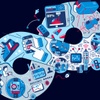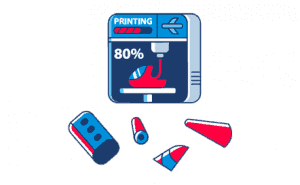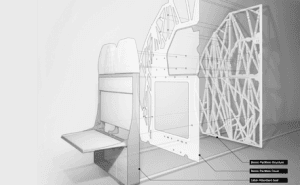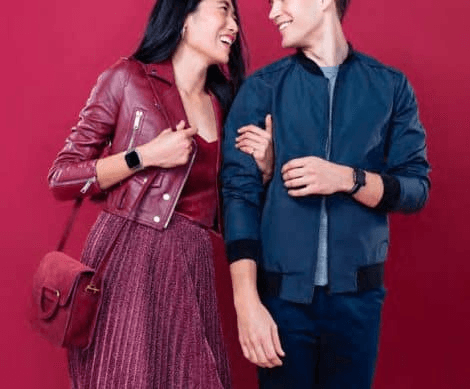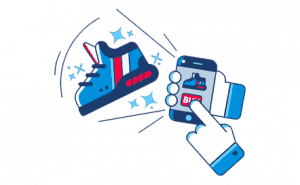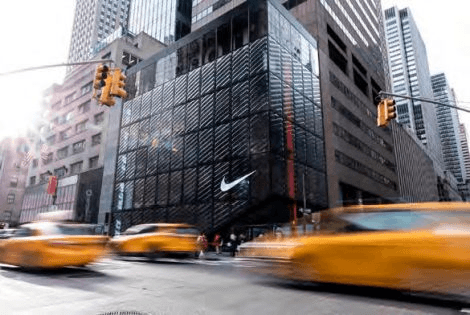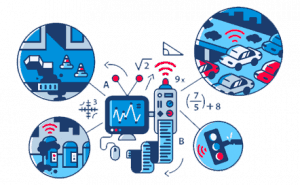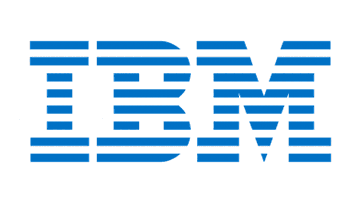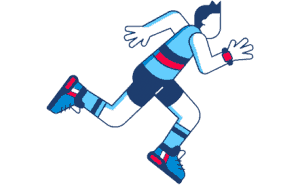Product design in the 21st century: Reinventing the wheel IE
The role of the designer is no longer to seek beauty from an aloof distance based on artistic notions; it is about knowing what matters to fellow human beings, how you can use that knowledge, and identifying the right tools from an ever-expanding set of options.
Seemingly light years away from just paper and pencils, technology such as 3-D imaging, the internet of things (IoT) and artificial intelligence have revolutionized the process of design. Today, designers of physical products have to consider how to best use the technology to design or improve on products, as well as how to integrate it into the user experience.
“Before, we had the idea that a product was a physical object, like a table, or a bottle of shampoo. But since the digital revolution has taken over, more and more products have become intangible or digital. For example, Airbnb is a product that is digital in nature. Digital product design captures this, and considers how users interact with the design,” said the director of IE University’s Bachelor in Design, Edgar Gonzalez.
Generative creation, slime mold and the plane of the future
Computers or artificial intelligence can offer designers thousands of great solutions to a single problem through the generative design process.
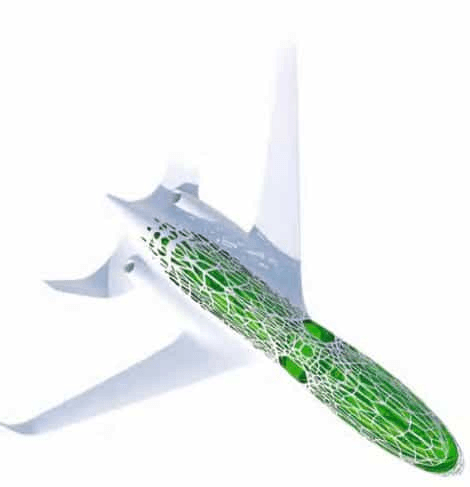
Today’s technology allows designers to sweep away precedent and – really – go back to the drawing board. Generative design mimics nature’s evolutionary approach, taking the designer’s goals as a starting point from which to create myriad options. The designer can ask the program for output suggestions within certain practical constraints, and then fine tune the results that emerge.
Aerospace company Airbus harnessed generative design and 3D printing to develop a new concept plane. The thousands of design directions generated
were digitally mapped by the team against weight, stress and strength parameters to isolate the best ideas. Among the most striking is the partition that separates a plane’s passenger seating area from the flight attendants’ galley – usually a nondescript panel, but here a futuristic lattice of irregular forms. The partition’s frame was based on the growth patterns of slime mold, a unicellular organism, while the grid structures of mammal bones inspired the lattice structure.
“The bionic partition is a pathfinder project, to foster the evolution of 3D printing in our manufacturing process”Bastian Schaefer, Airbus innovation manager
Beyond its challenging look, the design dividend that really matters to Airbus and the future of aviation are the fuel and emissions savings resulting from the structure’s lightness. Fitting four such partitions in an Airbus 320 would remove 500kg of weight and cut carbon emissions by up to 166 metric tons per aircraft per year.
Inspired by nature, this 3D printed partition is optimized to be strong and light. Image courtesy of Airbus
Smart can also mean stylish
New technology allows Fitbit to tap into a continuous loop of consumerled product orientation.
Everything about Fitbit, the leading global wearables brand, revolves around the user’s experience, which, converted into data, feeds back into the design of the applications, devices, social interfaces and activities to create a continuous loop of consumerled product orientation.
The bottom lines have to be an intuitive user interface, a comfortable fit for the wearer’s body and functionality. But Fitbit devices have eschewed the dark sleekness and cold metal sheen that characterizes much of smartdom, instead using fun colors, curves and floral motifs, among other features.
“We humanize technology,” Gadi Amit, the president and principal designer at NewDealDesign, told Fortune of the company’s work for Fitbit. “We make technology connect, speak, and interact with humans in a positive way. We want people to enjoy technology. We want people to really thrive with technology.”
User experience: The age of individualized design
It might look like a gimmick, but those customized jars of Nutella or cans of Coke with the name of your loved one are confirmation of a major truth. In an era in which technology is sweeping away the barriers between the designer and the consumer, users expect to be in control of the end product.
It is the new normal that people can create customized shampoos, personalized vitamins, or even individualized mattresses.
In leisure too, the age of social media is centered on the individual’s perspective; we are not taking part in mass entertainment event in the way whole families used to watch the television set together.
We are always ourselves – or, more to the point, we are what we want to be seen to be; we are our own design. Tailor-making experiences around the various products is increasingly demanded both online and offline.
Take User Experience (UX) design, which, despite its current popularity, didn’t exist three years ago according to IE University’s Edgar Gonzalez. “The interface was originally designed by programmers, but it needed something more focused on the consumer’s experience. In only three years, this specialty has shot to the top of employer’s wish-lists,” he explained.
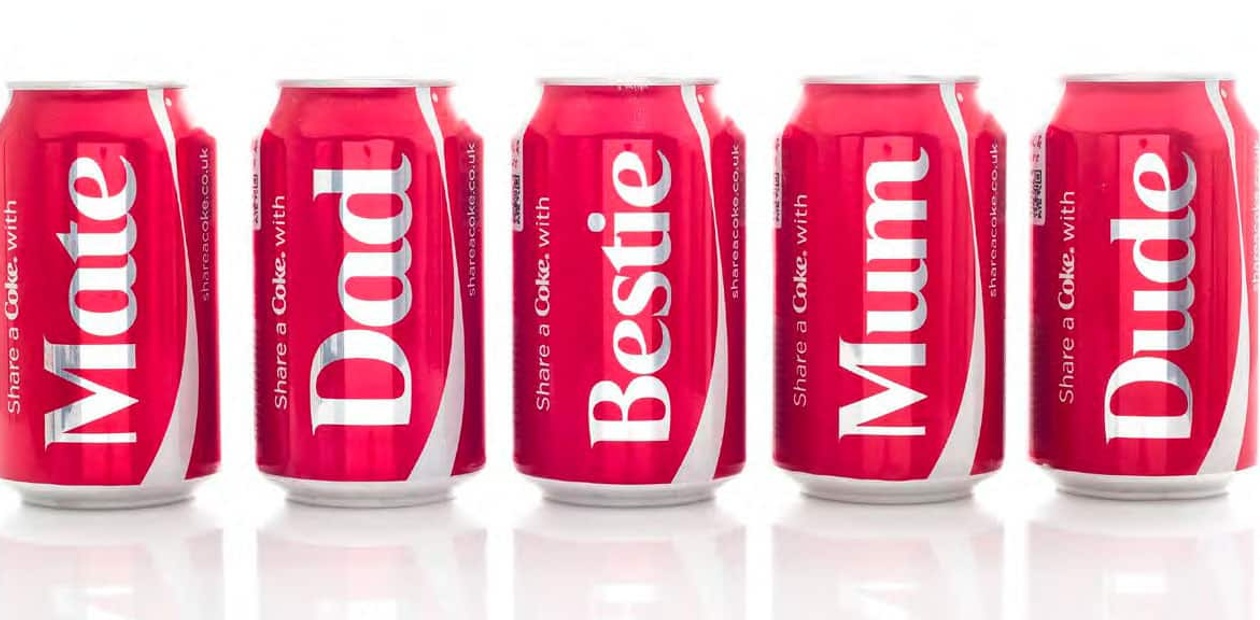
Studies show the “Share a Coke” personalized marketing campaign increased Coke’s market share in Australia by four percent and reversed more than 10 years of Coke consumption decline in the U.S.
Photo: Shutterstock
Consumers become the brand
A little more than a century after the world’s first department stores such as London’s Selfridges used artistic displays and science exhibits to entice customers inside, a new retail paradigm is being developed by sports and leisure giant Nike. The aim is to go beyond simply showing the consumer a dazzling array of athletic gear to creating a genuinely unique personalized experience.
In its new generation of stores, led by the Innovation House flagship centers opened in 2018 in Shanghai and New York, Nike has woven its mobile app into the retail space.
In other words, I am still the Nike+ app user I am at home when I am in the store; this is still about me and how I connect with the brand. Setting the app to in-store mode, customers can request a shoe or garment in a certain size to enter a fitting room instantly, examine on their interface what the mannequin is wearing, receive exclusive product offers, and simply scan and check out without waiting in line.
“There is much more focus on the consumer-creator based on the idea of interpersonal connectedness with the brand”Lily Fletcher, Strategy Director, Accept & Proceed
Lily Fletcher, the strategy director of Accept & Proceed, the creative firm behind the Shanghai store, explained to Forbes that “We consider the space part museum and part club to hang out in, in order to cater to a huge diversity of people. One of our biggest learnings was that this audience had very, very high expectations of what a brand should deliver”.
Besides remarkable exhibits, imposing screens in and adaptable spaces with floor and wall panel lighting, user experience (UX) in the Innovation House stores is taken to its logical conclusion, allowing customers to design their own kicks in collaboration with professional designers in the Nike By You space. In the New York flagship store, there is a Speed Shop on the basement level, where data-driven stocks reflect proportionately what Nike products local people – New Yorkers in this case – are buying. The spaces are grand – dazzling even – but Nike wants all elements to align behind a strong UX, and not just oohs and aahs as the screens blink and the lights flash.
“We want to have the best store experience where our most connected customers are,” said Michael Martin, Nike’s global head of digital products.

JUST DO YOU
JUST DO YOU
Nike’s concept stores allow clients to tailor-make both the experience and physical products to suit their particular needs. Top: Shoes ready for a personal touch through a dizzying array of customization options. Bottom left: The sneaker bar, which allows NikePlus members to reserve items on their phones and pick them up at an in-store digital locker. Bottom right: An app feaure that allows users to scan mannequins and instantly purchase the items they like.
Photos: Nike
Smart cities: How technology is transforming urban design
The idea of the smart city has been around for more than a decade, and there is no question that urban authorities all over the globe are harnessing the power of Internet of Things (IoT) connectedness to boost efficiency in the delivery of services.
Data gathered from sensors, CCTV cameras and connected citizens provide the raw resources for city governors to bring about the adjustments and improvements that can make urban dwellers’ lives smoother and more sustainable. The amount of data does not stop increasing; by 2020 it is estimated that the globe will be hosting 20.4 billion IoT devices.
Largely, the focus has tended to be on avoiding or alleviating problems, such as traffic bottlenecks, pollution, garbage collection, and security, health and housing issues.
But on the more creative side, what can be done to make a better digital infrastructure for citizens to use and engage with their city and how it works? And, how can up-and-coming urban designers harness new technology to improve the livability of cities?
In the next generation of smart cities, residents will not be merely passive recipients of services, but rather active participants in shaping how their city operates and uses its resources. If the interfaces are well designed, citizens can be empowered by data to make better-informed decisions.
In Buenos Aires, the allGreenup app engages users by awarding them points for sharing a vehicle; the points can be exchanged for rewards and discounts from associated businesses. Going further, Barcelona has created Decidim.Barcelona, a digital platform for civic participation that allows users to participate in city council decisions and make citizen proposals.
Madrid, too, is in the midst of a quiet revolution. Decide Madrid is an online platform with 400,000 users, any of whom can propose an idea, which will go to a citywide referendum if it is backed by 27,662 other users (1% of Madrid’s adult population). The application behind Decide Madrid, which also allows users to vote online to decide how to allocate €100 million in spending each year, has been adopted by 100 government institutions in 33 countries.

Hangzhou, China used to suffer from some of the country’s worst traffic congestion. But now, officials are using an AI program to monitor and manage the traffic flow, which allows adjustments to traffic lights and signage to be made in real time. Powered by a combination of big data, IoT and machine learning, traffic in Hangzhou now moves 11 percent faster than before and emergency vehicles responding to calls for help are able to get to their destination in half the time.
Photo: Alexander Popov
Santander: Is a digital city a more human city?
Santander (population 172,000) on Spain’s northern coast has become one of the smartest cities in Europe by deploying more than 12,000 sensors and providing citizens with new tools to deliver feedback.
Mayor Gema Igual offered a neat example on Telefónica’s blogthinkbig.com site, saying residents had noted that they were not woken one night by the garbage truck, and it turned out that this was because the sensor in the organic waste container indicated it was less than half full. Santander’s city hall has joined with the private sector, in particular Spanish telecoms giant Telefónica, to create SmartSantander.
But it is not only about gathering data; urban planning is being shaped by the input of citizens through platforms such as Pulso de la ciudad (City pulse), where residents inform on any incidents or problems in real time, and SantanderCityBrain, a participatory platform on which challenges for the city’s future are raised, and proposals can be debated and gather traction.
“Technology is useless unless it improves the lives of citizens, and this is our aim with the smart city platform: to make it so that all these electronic devices and that knowledge in the form of data give residents a better service, so they can live together in a kinder and, ultimately, more human city,” said Marcelino Lucio from Santander city hall’s IT service.
Strategic design: A toolkit to shape the changing world
As technology disrupts the world, design, in all of its forms, is an increasingly important toolkit that can be used to both shape and understand the world. Beyond the role of design in creating products, digital experiences or even cities, it is now increasingly being understood as a way to reshape entire processes.
“Design is not only about offering functional solutions; it’s also about asking questions. It’s the way that we shape the world around us, and look at those problems that face us”Deyan Sudjic, Director of the Design Museum of London
“Is the world going too fast, has the smartphone killed off the idea of privacy, will robots take away our jobs? All these things are shaped by and understood by design,” according to Deyan Sudjic, Director of the Design Museum of London and an advisor to IE University’s Design Council, a body made up of leading professional and business representatives to foster a strong bond between the university faculty and the real world. “Design is a fantastic toolkit to understand the world,” he concluded.
Strategic design is the application of design principles to find innovative solutions in areas such as business, government and NGOs, and the approach is quickly gaining popularity as organizations reconceptualize and optimize procedures, products and their very thinking. Even digital systems themselves often fail as they are not fit for purpose.
According to a 2018 study by Gartner, only 7-18 percent of organizations possess the digital dexterity to adapt to the new collaborative, mobile and technology-driven ways of working. The solution lies in better technology, yes, but also in designing an environment that puts the individual at the center and allowing feedback to flow from one department to another.
How design thinking brought IBM’s brains together
Although the former president of IBM, T.J. Watson Jr, coined the phrase “good design is good business,” almost a half-century ago, in 2013, IBM Design began to weave a culture of design throughout its organization at an unprecedented scale. IBM Design Thinking is a framework that changes the way IBM approaches problems and solutions to improve the lives of the people the company serves. Design thinking is based on the idea of a continuous loop, back and forward, between the design and users, in which all parties are encouraged to observe, reflect and then make solutions.
“Design is too important for designers alone, so we have to give away its secrets to everyone who is involved in these problems”Miroslav Azis, IBM Experience Design Practice Lead
In 2018, the US tech company commissioned a study to evaluate the results of this project. Not only did the design thinking approach double design and execution speed, it had generated $18.6 million in increased profits over three years, and produced a 301 percent return on investment.
Conclusion: Dare to rethink the world
The act of designing has now become inconceivable without the use of digital tools and an awareness of how much the world and our societies have been changed by technology. Nowadays, we need to be aware of how technology impacts the way we think about design. The digitals tools available and the speed of modern communication mean that it is essential to keep an open mind as to the possibilities of any venture – you may be taken in a completely different direction. The key to the future is to free the concept of design from its former physical niches and dare to rethink entire processes and fields of human endeavor.
DESIGN TAKEAWAYS
DESIGN TAKEAWAYS
THE FUTURE IS DIGITAL BUT IT MUST ALSO BE HUMAN
DESIGN IS ASKING QUESTIONS; TECHNOLOGY CAN PROVIDE NEW ANSWERS
CREATIVITY HAS NEVER HAD A BROADER TOOLKIT TO MAKE USE OF
STRATEGIC DESIGN MEANS EVERYTHING CAN BE REINVENTED
